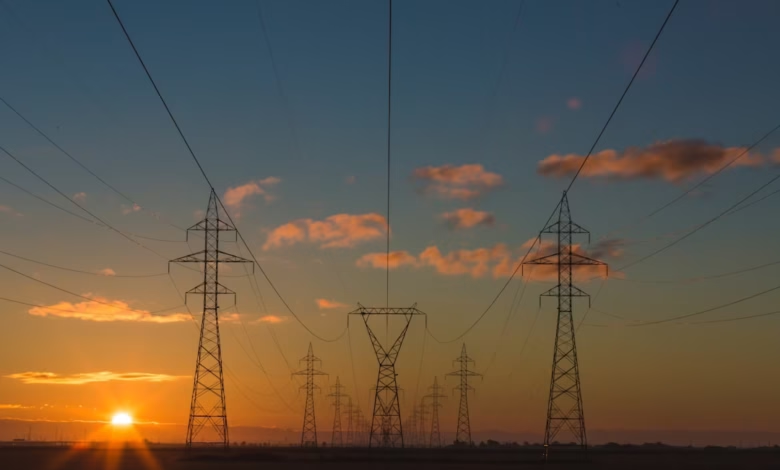Navigating Energy Policy and Regulation: Government Initiatives Driving Renewable Energy and Transitioning to a Sustainable Future

As the world grapples with the dual challenges of climate change and energy security, effective energy policy and regulation have emerged as critical components in shaping a sustainable future. Governments across the globe are implementing various initiatives aimed at enhancing energy efficiency, promoting renewable energy sources, and facilitating the transition from fossil fuels to greener alternatives. This article delves into the intricacies of energy policy and regulation, exploring government initiatives that pave the way for renewable energy development and energy efficiency measures.
We will examine the essential role of regulation in balancing the ongoing energy transition, particularly in managing the delicate relationship between fossil fuels and emerging green energy solutions. Additionally, we'll look ahead to future trends in energy markets, highlighting innovations in energy storage, smart grids, and carbon capture technologies that promise to revolutionize the way we generate, distribute, and consume energy. From solar power and wind energy to hydropower and bioenergy, understanding these dynamics is vital for comprehending the evolution of global energy trends and the economic implications of energy investments. Join us as we navigate the complex landscape of energy policy and regulation, and uncover the pathways toward a sustainable energy future.
- 1. Navigating Energy Policy: Government Initiatives for Renewable Energy and Energy Efficiency
- 2. The Role of Regulation in the Energy Transition: Balancing Fossil Fuels and Green Energy Solutions
- 3. Future Trends in Energy Markets: Innovations in Energy Storage, Smart Grids, and Carbon Capture Technologies
1. Navigating Energy Policy: Government Initiatives for Renewable Energy and Energy Efficiency
Navigating energy policy has become a critical focus for governments worldwide as they seek to manage the complex landscape of energy production and consumption. In recent years, numerous government initiatives have emerged to promote renewable energy and enhance energy efficiency, reflecting a broader commitment to a sustainable energy future.
One of the key aspects of these initiatives is the push towards renewable energy sources such as solar power, wind energy, hydropower, and bioenergy. Governments are implementing policies that encourage investment in these technologies, supporting the energy transition from fossil fuels to green energy. This shift is vital for meeting global energy trends that prioritize sustainability and reducing carbon emissions in the face of climate change.
Energy efficiency is another crucial element of government energy policy. By promoting energy-efficient technologies and practices, governments can reduce energy consumption and lower costs for consumers and businesses alike. Initiatives may include financial incentives for electric vehicles, energy-efficient appliances, and smart grids that optimize energy distribution and usage. These efforts not only enhance energy security but also stimulate energy markets by creating a demand for innovative energy solutions.
Moreover, the integration of energy storage solutions is essential for managing the intermittency of renewable energy sources. Governments are investing in research and development (R&D) to advance technologies that improve energy storage and distribution, including thermal energy storage and hydrogen energy systems. These innovations play a significant role in balancing energy supply and demand, contributing to a more resilient energy infrastructure.
As energy markets evolve, policies related to energy exports and imports are also being reassessed. Countries are looking to balance their energy needs with the global demand for energy resources, exploring opportunities for carbon capture technologies and offshore energy projects. By fostering a diverse energy portfolio and investing in distributed energy systems, governments can enhance energy transportation networks and ensure a stable energy supply.
In summary, government initiatives aimed at navigating energy policy are pivotal in promoting renewable energy and enhancing energy efficiency. These measures not only align with global energy trends but also support innovations that pave the way for a sustainable and secure energy future. As we move forward, the success of these policies will be instrumental in shaping our energy landscape and addressing the challenges posed by climate change.
2. The Role of Regulation in the Energy Transition: Balancing Fossil Fuels and Green Energy Solutions
Regulation plays a critical role in the energy transition, as it navigates the complex interplay between fossil fuels and renewable energy solutions. As governments worldwide strive to balance energy security, economic growth, and environmental sustainability, effective energy policy is essential to guide this transformation.
The shift towards green energy has led to an increased focus on renewable energy sources such as solar power, wind energy, hydropower, and bioenergy. These energy innovations are crucial for achieving climate change mitigation goals. However, fossil fuels, which have historically dominated global energy markets, continue to play a significant role in meeting immediate energy demands. Regulations are necessary to manage this duality, ensuring a gradual and equitable transition towards a cleaner energy landscape.
One of the key aspects of energy regulation during this transition is promoting energy efficiency and energy storage solutions. Smart grids can facilitate the integration of distributed energy resources, enhancing the reliability of energy transportation and ensuring that excess renewable energy is effectively utilized. By investing in energy R&D, governments can stimulate advancements in carbon capture technologies and hydrogen energy, which can help reduce emissions from fossil fuel use while supporting energy security.
Moreover, energy policies that incentivize energy investments in both renewable and fossil fuel sectors are essential. This balanced approach recognizes the need for transitional solutions, such as thermal energy and nuclear energy, which can provide stable baseload power while renewable capacities are being scaled up. The regulation of energy markets must adapt to evolving global energy trends, allowing for flexibility in energy imports and exports, thus ensuring that countries can meet their energy demands while adhering to climate commitments.
Ultimately, by creating a regulatory framework that supports both fossil fuel management and the adoption of green energy, governments can foster a sustainable energy transition that is economically viable and environmentally responsible. The success of this transition hinges on effective regulation that balances the complexities of energy economics, security, and the pressing need for climate action.
3. Future Trends in Energy Markets: Innovations in Energy Storage, Smart Grids, and Carbon Capture Technologies
The future of energy markets is poised for significant transformation, driven by innovations in energy storage, smart grids, and carbon capture technologies. As global energy trends shift towards sustainability, the integration of renewable energy sources like solar power, wind energy, and hydropower is becoming increasingly vital. These innovations not only enhance energy efficiency but also play a critical role in the energy transition away from fossil fuels and nuclear energy.
Energy storage technologies are at the forefront of this evolution, enabling the effective harnessing of green energy. With advancements in battery technology, particularly for electric vehicles, the storage of energy generated from intermittent sources like solar and wind is becoming more feasible. This enhances energy security by ensuring a reliable supply even when renewable generation is low. Key developments in thermal energy storage and hydrogen energy production also contribute to stabilizing energy markets and supporting a more resilient energy infrastructure.
Smart grids represent another pivotal innovation in managing energy distribution and consumption. These sophisticated systems utilize data analytics and IoT technology to optimize energy transportation and improve energy efficiency. By facilitating real-time communication between energy producers and consumers, smart grids enable a more decentralized and distributed energy model. This not only maximizes the integration of renewable energy sources but also allows for better energy management and reduced reliance on fossil fuels.
Carbon capture technologies are essential in addressing climate change and achieving net-zero emissions targets. By capturing carbon dioxide emissions from power plants and industrial processes, these technologies play a crucial role in the energy economics of fossil fuel usage, allowing for a cleaner transition to renewable energy. Moreover, investments in carbon capture can enhance energy exports and create new economic opportunities, contributing to a more sustainable energy market.
As energy policy continues to evolve, these innovations will be critical in shaping future energy markets. The focus on energy R&D and investment in new technologies will not only drive economic growth but will also support the global commitment to combat climate change. By embracing these trends, governments can ensure a more sustainable, efficient, and secure energy future that aligns with the demands of a rapidly changing world.
In conclusion, the landscape of energy policy and regulation is rapidly evolving, driven by the urgent need for sustainable solutions to combat climate change and enhance energy security. As governments implement initiatives aimed at promoting renewable energy and improving energy efficiency, we witness a significant shift towards a more balanced energy transition that incorporates both fossil fuels and green energy solutions. Future trends in energy markets, such as advancements in energy storage, smart grids, and innovative carbon capture technologies, are set to redefine how we manage and utilize energy resources.
The integration of diverse energy sources—including hydropower, bioenergy, nuclear energy, solar power, and wind energy—will play a crucial role in ensuring a resilient energy system. By fostering energy innovation and investment, we can unlock the potential of distributed energy and electric vehicles while enhancing our energy transportation infrastructure. As we navigate these global energy trends, it is essential to remain vigilant in our efforts to secure a sustainable energy future that prioritizes energy economics and addresses the challenges posed by energy imports and exports.
Ultimately, the commitment to energy R&D and the adoption of thermal energy and hydrogen energy solutions will be instrumental in realizing a greener and more efficient energy landscape. By emphasizing collaboration and strategic planning, we can pave the way for a successful energy transition that not only meets our current demands but also anticipates the needs of future generations. Embracing this transformative journey will ensure that we harness the full potential of our energy resources while remaining steadfast in the fight against climate change.





